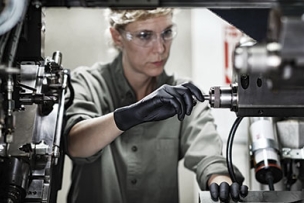MCR Safety has over forty years of experience as a leader in the field of personal protective equipment (PPE). Our assortment of offerings includes gloves, glasses, and garments which are made from the highest quality materials available to ensure maximum safety, comfort, and style.
Did you know that 10% of all U.S. eye injuries happen in welding? It’s a dangerous job, especially in the oil and gas industry. The main areas of the body at risk are eyes, hands, arms, and chest — but virtually any part of the body can suffer harm during welding.
While building new pipelines, working on rigs, or operating in the oil fields, welders are constantly exposed to a wide variety of hazards: metal splatters, molten liquids, UV and radiant heat, sparks, sharp surfaces, noise, harsh weather, and moving or falling objects.
Oil and gas industry welders need reliable protection through the use of personal protective equipment (PPE). It’s not uncommon for pipeline and rig arc welders to work 10- to 12-hour days. This means their PPE must not only be extremely safe, but also be very comfortable and flexible for long periods of work. Since MCR Safety knows welders want comfortable safety gear, they've answered their wishes with some brand new welding gear highlighted below.
Here’s a look at the hazards oil and gas welders face, along with the PPE and apparel that keeps them safe.







